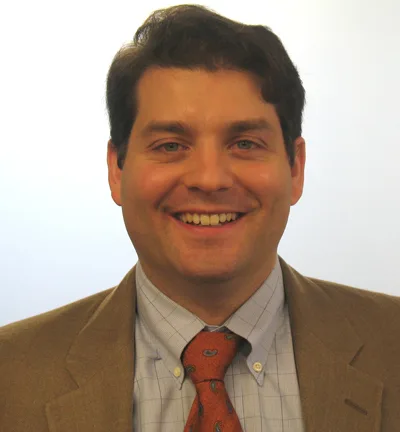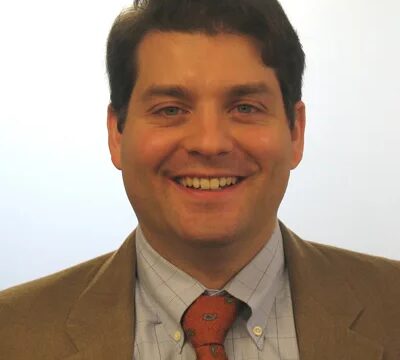Like many of the people we interview on Stacking Benjamins, Kris Monaco took a circuitous route to his current position of head of ISE ETF Ventures. What type of education does a guy have who creates indexes and helps ETFs launch? On that note….how are ETFs made? Kris stopped by the basement last week and gave us a glimpse into his background and craft.
Joe: Welcome, man!
Kris: Good morning, thanks for having me.
Joe: I’m very excited you could be here, having some coffee and talking exchange traded funds (ETFs). How did you first experience ETFs? In the 90’s they seemed like this little niche product, which clearly isn’t the case anymore.
Kris: No, that’s not the case. (ETF’s) started out as this little product that people had heard about but didn’t know anything about. A lot of people joke that it was the longest overnight success in the history of financial markets….and that’s certainly the case because the growth that we’ve seen came only in the past five to eight years.
Joe: How did you first get involved with ETFs?
Kris: Going way back, my dad was a very avid investor, and I use that term (investor) very lightly for him….in what were known as “pink sheet” stocks.

Joe: Oh, wow.
Kris: For those of you not familiar with pink sheet stocks, these are—at the time, in the 70’s and 80’s—stocks that were quoted by market makers and whose prices were delivered, in print, on paper that was printed in pink; hence the name “pink sheet stocks.” Most of them were penny stocks.
My dad was, I have to say, a terrible investor. He would admit it as well. You learn a lot from looking at other people’s mistakes. It intrigued me, and I started to paper trade. Nevertheless, I actually became an engineer. High school, undergrad, and eventually grad school.
Joe: What type of an engineer were you?
Kris: My specialty was geotechnical engineering, so foundation engineering, a discipline within civil engineering….
…When I made the decision to leave engineering, because I was drawn back to what had interested me from childhood, it was almost like therapy for engineers….to look at things a little differently than just that purely analytical point of view that engineers sometimes have.
Joe: Was it a job offer then? Was it you saying, “I want to be more involved in finance?” Why did you make the leap?
Kris: What had attracted me to engineering in the beginning was that I could build things that people use—and I’ll go back to that theme, because it continues to this day. When I was an engineer I found myself to continue to trade, and not just paper trade my dad’s pink sheet stocks anymore. I did quite well in some cases and did quite poorly in others, and I thought I could learn how to trade in school. I left engineering and went back to school again, and quickly learned that you can’t learn how to trade in school, but you can learn a lot about what goes on under the hood. So, this success and failure at trading, led to this engineering look at financial markets, and then fast forward to ISE, where eventually I had the opportunity to again build things that people could use and benefit from.
Joe: ETFs then….you’re on the leading edge of making ETFs. How does this process start? Do you have an idea…or have a client that says they’d like to track a certain index? How are ETFs made?
Kris: That’s a great question, and it could happen in any of those ways. One way that you mentioned, is that sometimes we will get a request from one of our partners that says, “We have an idea. We think investors are interested in this particular theme. How can you help us build it?” Then what we do….you could say we become equity analysts in a space where there is no particular sector exposure.
One example of that was cloud computing, where we worked with First Trust to help them create the first cloud computing ETF. When we began that work we said, “What does it actually mean to be invested in cloud computing? What companies derive benefit from the cloud? What companies are providing services that are deemed to be cloud services? How can we combine them in a way to come up with a portfolio that makes sense for investors?
It took us awhile. It took a lot of research…calling the IR departments of some of the stocks we were considering….asking more questions about how they deemed themselves to be in the cloud ecosystem. Eventually then we came up with a portfolio that overlaid things like market cap, liquidity in the stock, any revenue exposure that was segmented particularly. We combined all these things to come up with a definition of cloud, a formal methodology document, which you could say is a recipe book for how the index is calculated, and then we put the index into production….which means a real time calculation of this benchmark for an industry where one didn’t exist before.
Really cool, huh? Want more details on how ETFs are made? For even more on this topic, listen to our interview with Kris on the Stacking Benjamins podcast. Check out some of Kris’ work…including a list of the indexes at ISE and one of Kris’ latest joint projects, the PureFunds ISE Cyber Security ETF (with, as you’d expect, the ticker symbol HACK).


Leave a Reply